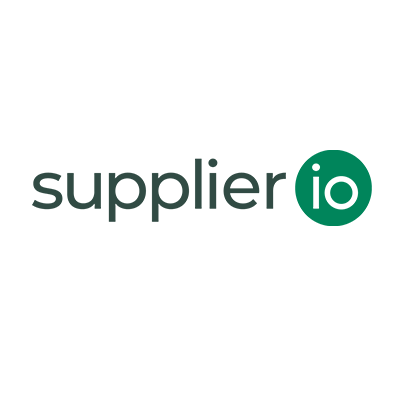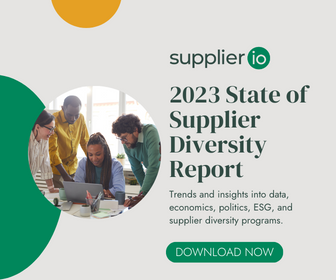Supplier Diversity Best Practices for 2024
Sponsored Content

Supplier diversity programs are not only good for society; they are crucial to enhancing supply chain competitiveness, risk mitigation, cost reduction, among other benefits for businesses. Within the past year, supplier diversity has gone from community focused and potentially optional to business critical. But as demand and requirements increase, leaders are being held to a higher standard. The question on many minds: “How can I create a successful supplier diversity program that measurable, and is sure to create impact?”
Since the top 20 percent of companies with the highest diverse spend outperform industry peers two or three times over, it’s wise to review their winning program strategies. To navigate the dynamic landscape of supplier diversity and drive tangible business outcomes, here are five best practices collected from over 200 industry leaders.
1) Ensure Data Accuracy at All Costs
Accurate data is vital for managing supplier diversity programs, so it’s troubling that 75 percent of leaders express doubts about their data. One simply can’t understand how much a business spends with small and diverse suppliers when there are hundreds or thousands of unreliable data points to analyze. Self-reported data or business directory providers can be up to 50 percent inaccurate, sometimes failing to identify small and diverse suppliers, which may undervalue the success of your program by as up to 20 percent.
In a recent webinar, The Hackett Group reported that over 51 percent of leading programs leverage third-party supplier diversity data instead of owning the task internally, which is a heavy burden for an understaffed or busy team. Spot checking, in which leaders inquire 20-30 suppliers to confirm the accuracy of their credentials and other data, is an effective strategy. Lastly, it’s important to make the data visible and use it. Leaders recommend a central dashboard that shows key metrics across business units (BUs), so each team can see how well it’s doing.
2) Provide Data Context for Actionable Insight
While most (86 percent) programs report dollars spent with small and diverse suppliers, top performing leaders look for additional ways to provide context for results. Some have embraced more detailed metrics, such as BU-specific or peer benchmarking — which is especially effective in encouraging improvement.
Some leaders go beyond internal metrics, such as measuring the economic impact of spend with small and diverse suppliers. In fact, recent data reveals leading organizations’ supplier diversity programs generated over 1.3 million jobs, US$104 billion in income, and $31.4 billion in tax revenue. Combining business-specific metrics with community output allows procurement leaders to contextualize their supplier diversity program and strengthen supply chain resilience.
3) Strengthen Your Relationships
As supplier diversity becomes more infused in how companies operate and spend money, relationships with leaders and stakeholders outside of procurement and finance are critical. In fact, strong connections among BU leaders can improve the impact of supplier diversity programs, with 89 percent of companies expecting internal support to maintain or increase in the coming years. As a result, leaders are aligning supplier diversity needs with department level plans. A good start is to select the top five spenders and discuss how small or diverse suppliers can help them reach objectives.
It’s also about strengthening relationships with customers. Forty-five percent of leaders use supplier diversity programs to help win new business and RFP, especially with big customers and government contracts. When teammates are holding each other accountable (48 percent of organizations include supplier diversity results in leaders’ compensation scorecards), then bottom-line impact really starts to trickle in.
4) Plan, Plan, Plan
In 2023, a challenging economic landscape emerged. Successful supplier diversity programs thrived through proactive and strategic planning. Leaders prioritize connecting with BU-leaders and buyers ahead of the RFP process to identify opportunities and bring in small and diverse suppliers earlier. The early collaboration for joint category planning empowers leaders to drive innovation together, versus making quick, reactive decisions.
Going further, leaders can even engage suppliers at the project design phase, leveraging their unique perspectives for shared vision. Pre-curating a small and diverse supplier pool before opportunities arise enables leaders to pinpoint services meeting company requirements for price, quality and speed. This also entails tracking expiring contracts and getting ahead of the process before it’s too late.
5) Maximize Impact by Doubling Down on ESG
More environmental, social and governance (ESG) regulations are developing than ever, however 75 percent of companies feel they don’t have the skills and systems in place to be ready for the data assurance needed for disclosure mandates — and failure to comply introduces even more risk into the volatile supply chain. As a result, visibility is of the utmost importance — and who has more visibility into suppliers than supplier diversity program leaders?
Proactive leaders are reaching out to third party data providers to see how they can expand their supplier identification beyond just diversity categories. To start with a general baseline and
capture company specific details, leaders are adding ESG questions to their supplier registration portal as well as ongoing supplier surveys. It’s especially important to prioritize highest spend suppliers or those with the biggest ESG risks, such as high carbon emissions.
Leading Solutions can offer businesses a complete supplier assessment that includes 61 indicators across eight ESG categories. They can ensure alignment with initiatives like the Sustainable Disclosure Regulation (SDFR) and the United Nations’ Sustainable Development Goals (SDGs), creating peace of mind for leaders knowing they have detailed supplier insights, reduced risk and ensured continuity.
Don’t Risk Being Left Behind
As supplier diversity continues to emerge as a differentiator for businesses, it’s important to ensure programs are built for long-term success. Although the landscape can be tricky to navigate, leaders are reaping the benefits of a thoughtful approach centered on data, relationships, and planning. Plus, with the added focus on ESG, even more value can be generated.
By embracing these best practices, procurement leaders can effectively drive significant business outcomes and overall supply chain resilience. Supplier diversity could be your secret weapon – its potential just needs to be unleashed.



